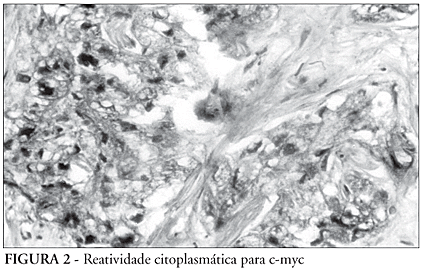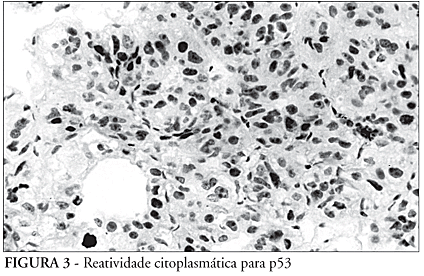BACKGROUND: Genetic and epigenetic alterations have been described in animal hepatocarcinogenesis models but need to be studied in human being. AIMS: To assess the immunoreactivity of p21ras, c-myc and p53 oncoproteins in hepatocellular carcinoma and non neoplastic tissue. Association of the immunoreactivity of these markers with histological grades and patterns, hepatitis B and C were additionally studied. METHODS: Detection of oncoproteins p21ras, c-myc and p53 was performed immunohistochemically in hepatocellular carcinoma (47 cases) and surrounding non neoplastic liver tissue (40 cases). RESULTS: Oncoproteins p21ras, c-myc and p53 were detected in 44,7%, 53,2% and 36,2% of the hepatocellular carcinoma cases, respectively. The p21ras and c-myc immunoreactivity has shown a significant association. However there was no association of p21ras, c-myc and p53 detection with hepatitis B and C virus infections, histological grades and patterns. The same significant association between p21ras and c-myc was observed in non-neoplastic tissue with cirrhosis when compared with tissue without it. The p53 immunoreactivity was negative in all non-neoplastic liver tissue samples. CONCLUSIONS: The immunoreactivity detection of p21ras, c-myc and p53 corroborates previous evidence of their detection in hepatocellular carcinoma that suggest the participation of these proteins in human hepatocarcinogenesis. The significant association between p21ras and c-myc oncoproteins in hepatocellular carcinoma and in cirrhosis can point to an interaction between them mainly, in hepatocarcinogenesis that occurs through cirrhosis.
Carcinoma, hepatocellular; Liver; Immunohistochemistry; Oncogene protein; Protein p53; Oncogene protein p21 (ras)





